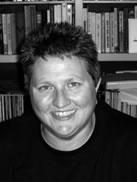 |
Rose
Collis is an author and journalist whose critically-acclaimed
biographies include 'A Trouser-Wearing Character: The Life
and Times of Nancy Spain' (Cassell, 1997) and 'Colonel Barker’s
Monstrous Regiment' (Virago 2001) Her latest book is Coral
Browne: ‘This Effing Lady’ (Oberon Books, 2007)
See Rose's web page here
|
| |
 |
 |
 |
 |
 |
| |
 |
 |
 |
 |
 |
 |
 |
 |
 |
 |
 |
 |
 |
 |
 |
 |
 |
 |
| |
|
|
| |
JOE
ORTON'S BRIGHTON - 1 OF 3 |
| |
In 1997, I fulfilled one ambition which I shared with
Joe Orton: I bought a home in Brighton. Of course, history
tells he didn’t live to do the same. Nonetheless,
the city is a place which has so many links to Orton and
his work.
COMING TO A THEATRE NEAR YOU: ORTON’S PLAYS
IN BRIGHTON
In February 1965, Loot was produced at the Theatre Royal
Brighton, starring Kenneth Williams, Ian McShane and Geraldine
McEwan. The Argus loved it: ‘brilliant farce…first-class
writing’ while the Brighton Gazette critic declared:
‘I think it is stupendous.’
In 1970, Loot was made into a film and shot mostly in
Brighton. The opening scenes were filmed on the now-derelict
West Pier; other Brighton locations you can spot are Bear
Road, Warren Road, Hartington Road, West Street and Woodvale
Cemetery.
In 1969, came What The Butler Saw, starring Ralph Richardson
and Coral Browne, the actress who Kenneth Halliwell had
originally recommended for the part of Mrs Prentice. Coral
said: ‘The greatest loss to the English theatre
was the death of Joe Orton. He was a genius, in tune with
today and only just getting started.’But, as she
told her friend Frith Banbury, by 1969, she had considerable
misgivings about doing the play: ‘Sir Turnip [Richardson]
will be v slow and fuck it up so it won’t run long
and I HATED Mr [Robert] Chetwyn’s “Importance”
so don’t fancy him either AND I’ve cooled
on the play. It’s hung fire too long.’
She insisted that the producers paid for Balmain to design
her an £800 mackintosh and matching lingerie: ‘I
was in terribly good taste,’ she said. ‘I’d
been on a diet for three years; oh yes, it was very nice
underwear. Going on stage with nothing but your undies
at my time of life, you’ve got to be wearing something
very pretty and delicate, otherwise you look like old
Frilly Lizzy, or a can-can girl.’
Oscar Lewenstein favoured Ralph Richardson to play Dr
Rance, but Orton had had his misgivings – he believed
the venerated actor was ‘a good ten years too old’
and not possessed of the comic skills the part required;
he believed Arthur Lowe would be better.
For his part, Richardson was enthusiastic about What the
Butler Saw – he
considered it to be ‘Literature, beautifully written…flicks
like Restoration comedy’. However, as Coral Browne
told Orton’s biographer, John Lahr, ‘Sometimes
it was difficult for him to learn because he had no idea
of what the words meant. He couldn’t get nymphomaniac
right because I don’t think he’d heard of
one of those. He would refer to it as “nymphromaniac”.
The play opened in Cambridge, then came a week in Brighton:
Coral told Lahr, ‘I’ve never seen anything
like it. He was attacked. People were writing him letters.
Ralph got terribly depressed, terribly down, thinking
he’d made a mistake. Taking a part in a “dirty”
play. He replied to every one of those letters.’
Stanley Baxter remembered that ‘there were old ladies
in the audience not merely tearing up their programmes,
but jumping up and down on them out of sheer hatred’.
Adam Trimingham, veteran Argus reporter, recalled: ‘This
was pretty strong stuff for the delicate regulars of the
Royal Circle. One by one they took their leave with the
creaking of seats and muffled whispers of outrage almost
providing more amusement than Orton's black comedy.’
Orton, of course, would simply have loved it all.
AGENT PROVOCATEUR: PEGGY RAMSAY
Peggy Ramsay, the agent who discovered Orton and, after
his death, ran his literary estate, had a weekend home
at 34 Kensington Place in the North Laine area for many
years. In his diary entry for 29th July, 1967, Orton said,
‘We went to Peggy's house... 'her little place'.
It was a nice old house in a back street. Built mid-nineteenth
century. Peggy had it filled with bric-a-brac. All of
it interesting but really there was too much....She took
me downstairs and showed me the garden... I liked the
garden. Cluttered gardens are fun. Cluttered houses I'm
not fond of.’
Peggy also owned another property in adjacent Trafalgar
Lane for the use of some of her clients, who included
Alan Ayckbourn, Willy Russell and Edward Bond.
Orton was put in touch with Ramsay by John Tydeman, the
BBC radio producer who produced his play The Ruffian on
the Stair. He told Joe, ‘She can be a bit of an
old cow, but if the chemistry is right, it will be terrific.’
After a faltering start to their professional relationship,
it was indeed ‘terrific’.
|
|
|
